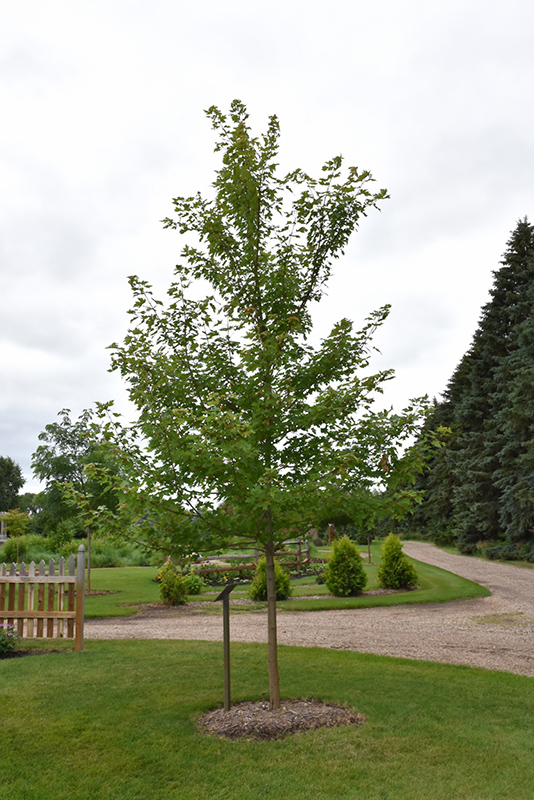Maple, (Freemani) Matador Acer x freemanii 'Bailston' Height: 45 feet Spread: 30 feet
Sunlight:
Hardiness Zone: 4a Description: Attractive summer foliage is followed by consistently rich red fall color that appears later in the season and holds for a long period before the leaves drop; shapely upright, oval form; a valuable addition to the landscape Ornamental Features Maple, (Freemani) Matador features showy clusters of red flowers along the branches in early spring before the leaves. It has green deciduous foliage. The lobed leaves turn outstanding shades of orange and in the fall. The furrowed gray bark and brick red branches add an interesting dimension to the landscape. Landscape Attributes Maple, (Freemani) Matador is a deciduous tree with a shapely oval form. Its average texture blends into the landscape, but can be balanced by one or two finer or coarser trees or shrubs for an effective composition. This is a relatively low maintenance tree, and is best pruned in late winter once the threat of extreme cold has passed. It has no significant negative characteristics. Maple, (Freemani) Matador is recommended for the following landscape applications; Planting & Growing Maple, (Freemani) Matador will grow to be about 45 feet tall at maturity, with a spread of 30 feet. It has a high canopy of foliage that sits well above the ground, and should not be planted underneath power lines. As it matures, the lower branches of this tree can be strategically removed to create a high enough canopy to support unobstructed human traffic underneath. It grows at a fast rate, and under ideal conditions can be expected to live for 80 years or more. This tree should only be grown in full sunlight. It is quite adaptable, prefering to grow in average to wet conditions, and will even tolerate some standing water. This plant should be periodically fertilized throughout the active growing season with a specially-formulated acidic fertilizer. It is not particular as to soil type or pH. It is highly tolerant of urban pollution and will even thrive in inner city environments. This particular variety is an interspecific hybrid. Special Attributes Freemanii Maples generally have few to no seeds. If it seeds the samaras, commonly known as helicopters for their winged shape. The size of seeds are 1 to 2 inches long.![]()
![]()
![]()
![]()
![]()
![]()
![]()
![]()
![]()
![]()


